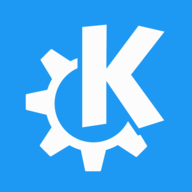Plasma 6.2 Beta has been released… Beta testers assemble 🦸♀️!
Please grab it, test it, submit bug reports. Final release will be on the 8th of October.
I like that multi monitor setups are getting more love.
@kde@floss.social @kde@lemmy.kde.social
8th of october? KDE 6.2 releasing on my birthday!? thanks for the gift! :trollestia:@Quilly
No, it’s my birthday 😃
@kde@floss.social @kde@lemmy.kde.social@artem
:pinkiegasp: Double birthday!!
@kde@floss.social @kde@lemmy.kde.social🎶 Happy birthday to yous! 🎂 🎵
@kde@floss.social @kde@lemmy.kde.social I wonder if an #immutable distro like @vanillaos could be a great tool for beta testing #plasma . In theory you could easily test out a beta image on your existing system, and then if there is some bug that prevents you from working on your main computer or you simply need something more stable, it would be easy to move back to stable.
Although, #opensuse ’s Snapper is also a great candidate for this way of testing.
@constancies @kde@lemmy.kde.social @vanillaos
Interesting you should bring that up. Watch this space…
It wouldn’t help with user config issues, though
deleted by creator
@constancies @kde@floss.social @kde@lemmy.kde.social A user of our community has created a KDE version of vanilla. It is also possible to create a kind of image testing by building all parts of KDE from source or using a repository.
@kde@floss.social @kde@lemmy.kde.social KDE is one of the best Desktop Environments you can get (and my personal favourite)
KDE for desktops with a mouse, Gnome for laptops with a touchpad. Both are great!
Oh hell no. Gnome ain’t getting anywhere near my laptops ever again. I almost threw the last one out a window in a fit of Gnome induced rage.
In Gnome (Wayland) you can 3-finger-swipe left or right to switch workspaces, up to show the overview with a global search and workspace overview, or down to show the top bar.
In overwiew, you can navigate between windows with the keyboard, close them with middle-click, and just start typing to open new ones with search.With just 2 extensions, you can hide the top bar and every window’s title bar, while still being able to quickly navigate between windows and workspaces. That way you use literally all the screen real estate on your small laptop monitor for what you’re actually working on. The DE disappears unless you need it. It’s so much smoother and faster than playing hunt-and-peck with the mouse cursor, which is a pain if you don’t have a mouse attached.
IMO it’s the best designed UI for portable notebooks, on any OS.
But on a desktop with a large screen, the UI elements are all way too big, and since you have a mouse in hand but no touchpad, it all stops making sense. That’s why I much prefer KDE on desktop PCs.









